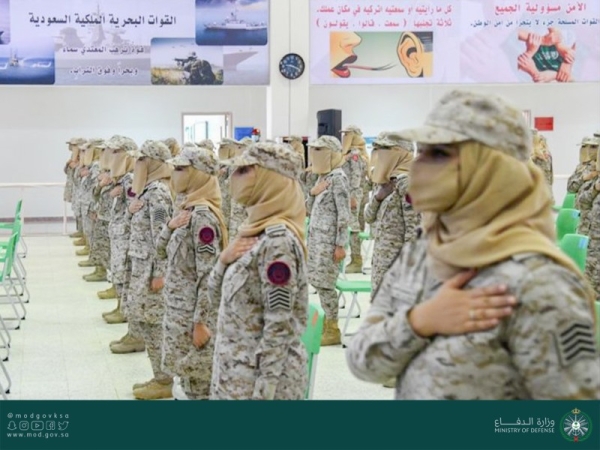Corruptistan
FULL MEMBER

- Joined
- May 28, 2022
- Messages
- 1,475
- Reaction score
- 0
- Country
- Location
The spectacular surge of the Saudi female labor force
Sofia Gomez Tamayo, Johannes Koettl, and Nayib Rivera Wednesday, April 21, 2021For decades, Saudi Arabia had one of the lowest female labor force participation rates in the world. In 2018, the share of Saudi women who had a job or were actively looking for one was 19.7 percent of the adult population of women with Saudi citizenship, our focus group for this blog (we are not considering the large expatriate population as they display a vastly different labor market behavior). In the years before that, the rate was much lower and had only recently started to slowly increase (see Figure 1). The Middle East and North Africa (MENA) had always lagged behind the rest of the world when it came to women and the labor market, but even by those standards, the Saudi rate was lagging considerably.
But in the last couple of years, something has been changing. In a relatively short time span of just two years, the labor force participation rate of Saudi women increased from 20 percent in late 2018 to 33 percent by the end of 2020—that is to say that the share of Saudi women in the labor market expanded by an incredible 64 percent in just two years!

Women of all ages are joining the labor force at higher rates. Between the end of 2018 and the end of 2020, the largest increases happened among Saudi women between the ages of 40 and 54 with increases of more than 20 percentage points. Most of the other age groups displayed an increase of at least 10 percentage points. Only at the fringes of the labor market—the youngest and the oldest workers—the increase was smaller, from about 3 to 5 percentage points. Another driver of this impressive growth is middle-skilled women. Those with secondary education experienced an almost threefold increase in participation—from 9 to 25 percent—during this period. Women with primary and intermediate education also entered the labor market at significant levels, increasing their participation rates by almost 10 and 12 percentage points, respectively.
Importantly, this inflow of Saudi women into the labor force did not translate into more unemployment, to the contrary. In practice, new entrants to the labor market usually spend the first couple of weeks or even months looking for work—so they are part of the labor force, but they are unemployed, potentially increasing the unemployment rate. Nevertheless, what we observe in Saudi Arabia, is that many of these women joining the labor market are finding work quickly. The employment rate—the share of the labor force that has a job—of Saudi women has been steadily increasing from 68 to 76 percent between the end of 2018 and 2020; and the female unemployment rate has decreased, from 32 to 24 percent. Maybe even more importantly, this increase in employment was not driven by the government hiring Saudi women. It was genuine private-sector-led employment growth. Between the beginning of 2019 and the end of 2020, public sector employment of Saudi women increased by only 5 percent (Figure 2). Private sector employment of Saudi women, on the other hand, grew among most economic activities, with the majority showing an increase of over 10 percent. Female employment in labor-intensive sectors such as construction, manufacturing, and accommodation and food grew by 9, 14, and 40 percent, respectively.

What could be the reasons for these dramatic changes in Saudi Arabia? While we have no definite answers yet, one should not underestimate the potential impact of the many reforms that made it easier for women to work over the last few years. These reforms ranged from allowing women to drive cars (crucial for being able to commute to work) to changes in the guardianship law, in the labor law, and in family law, among many others.
Saudi Arabia was, in fact, a top performer in the World Bank's Women, Business and Law Report 2021 https://openknowledge.worldbank.org/handle/10986/35094
It seems that these reforms are starting to pay off. After all, Saudi Arabia’s Vision 2030 reform program has an explicit objective to increase the female labor force participation rate to over 30 percent. For now, it looks like this objective was achieved 10 years early.

The spectacular surge of the Saudi female labor force
Sofia Gomez Tamayo, Johannes Koettl, and Nayib Rivera detail growth in Saudi women's entry into the labor market over the past two years.
Lessons for Pakistan that reforms are very much realistic if there is a political will to change regardless of sect or political outlook. At the end of the day most people regardless of gender want to be independent.













